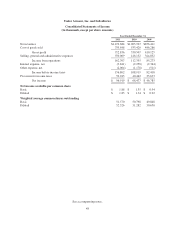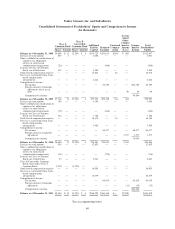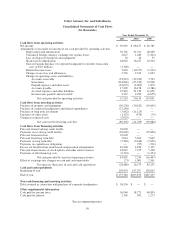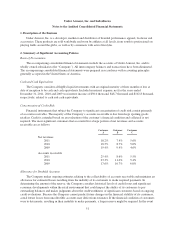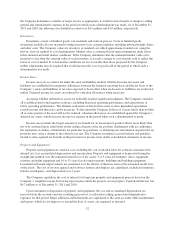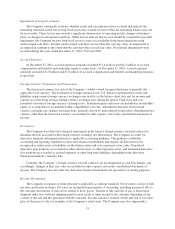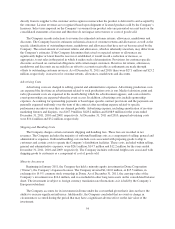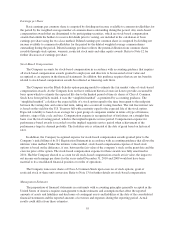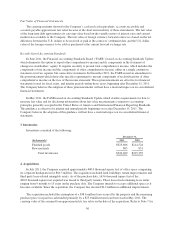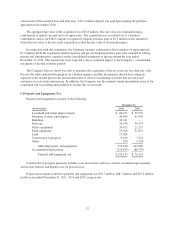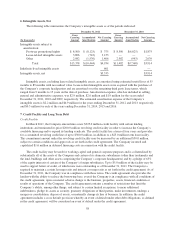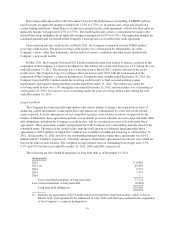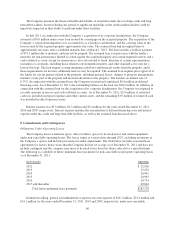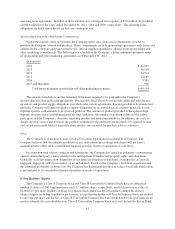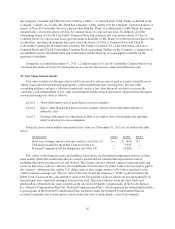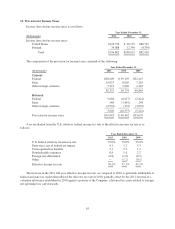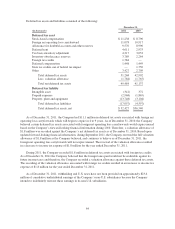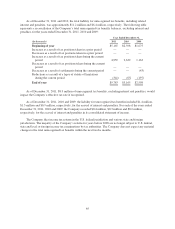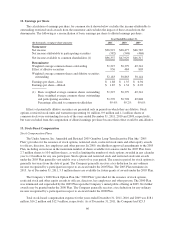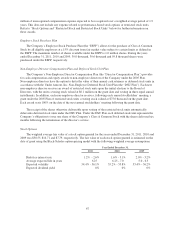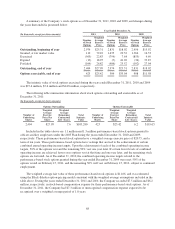Under Armour 2011 Annual Report Download - page 68
Download and view the complete annual report
Please find page 68 of the 2011 Under Armour annual report below. You can navigate through the pages in the report by either clicking on the pages listed below, or by using the keyword search tool below to find specific information within the annual report.
6. Intangible Assets, Net
The following table summarizes the Company’s intangible assets as of the periods indicated:
December 31, 2011 December 31, 2010
(In thousands)
Gross
Carrying
Amount
Accumulated
Amortization
Net Carrying
Amount
Gross
Carrying
Amount
Accumulated
Amortization
Net Carrying
Amount
Intangible assets subject to
amortization:
Footwear promotional rights $ 8,500 $ (8,125) $ 375 $ 8,500 $(6,625) $1,875
Lease-related intangible assets 3,896 (743) 3,153 — — —
Other 2,982 (1,576) 1,406 2,982 (943) 2,039
Total $15,378 $(10,444) $4,934 $11,482 $(7,568) $3,914
Indefinite-lived intangible assets 601 —
Intangible assets, net $5,535 $3,914
Intangible assets, excluding lease-related intangible assets, are amortized using estimated useful lives of 55
months to 89 months with no residual value. Lease-related intangible assets were acquired with the purchase of
the Company’s corporate headquarters and are amortized over the remaining third party lease terms, which
ranged from 9 months to 15 years on the date of purchase. Amortization expense, which is included in selling,
general and administrative expenses, was $2.9 million, $2.0 million and $1.9 million for the years ended
December 31, 2011, 2010 and 2009, respectively. The estimated amortization expense of the Company’s
intangible assets is $2.2 million and $0.9 million for the years ending December 31, 2012 and 2013, respectively,
and $0.3 million for each of the years ending December 31, 2014, 2015 and 2016.
7. Credit Facility and Long Term Debt
Credit Facility
In March 2011, the Company entered into a new $325.0 million credit facility with certain lending
institutions and terminated its prior $200.0 million revolving credit facility in order to increase the Company’s
available financing and to expand its lending syndicate. The credit facility has a term of four years and provides
for a committed revolving credit line of up to $300.0 million, in addition to a $25.0 million term loan facility.
The commitment amount under the revolving credit facility may be increased by an additional $50.0 million,
subject to certain conditions and approvals as set forth in the credit agreement. The Company incurred and
capitalized $1.6 million in deferred financing costs in connection with the credit facility.
The credit facility may be used for working capital and general corporate purposes and is collateralized by
substantially all of the assets of the Company and certain of its domestic subsidiaries (other than trademarks and
the land, buildings and other assets comprising the Company’s corporate headquarters) and by a pledge of 65%
of the equity interests of certain of the Company’s foreign subsidiaries. Up to $5.0 million of the facility may be
used to support letters of credit, of which none were outstanding as of December 31, 2011. The Company is
required to maintain a certain leverage ratio and interest coverage ratio as set forth in the credit agreement. As of
December 31, 2011, the Company was in compliance with these ratios. The credit agreement also provides the
lenders with the ability to reduce the borrowing base, even if the Company is in compliance with all conditions of
the credit agreement, upon a material adverse change to the business, properties, assets, financial condition or
results of operations of the Company. The credit agreement contains a number of restrictions that limit the
Company’s ability, among other things, and subject to certain limited exceptions, to incur additional
indebtedness, pledge its assets as security, guaranty obligations of third parties, make investments, undergo a
merger or consolidation, dispose of assets, or materially change its line of business. In addition, the credit
agreement includes a cross default provision whereby an event of default under other debt obligations, as defined
in the credit agreement, will be considered an event of default under the credit agreement.
58


